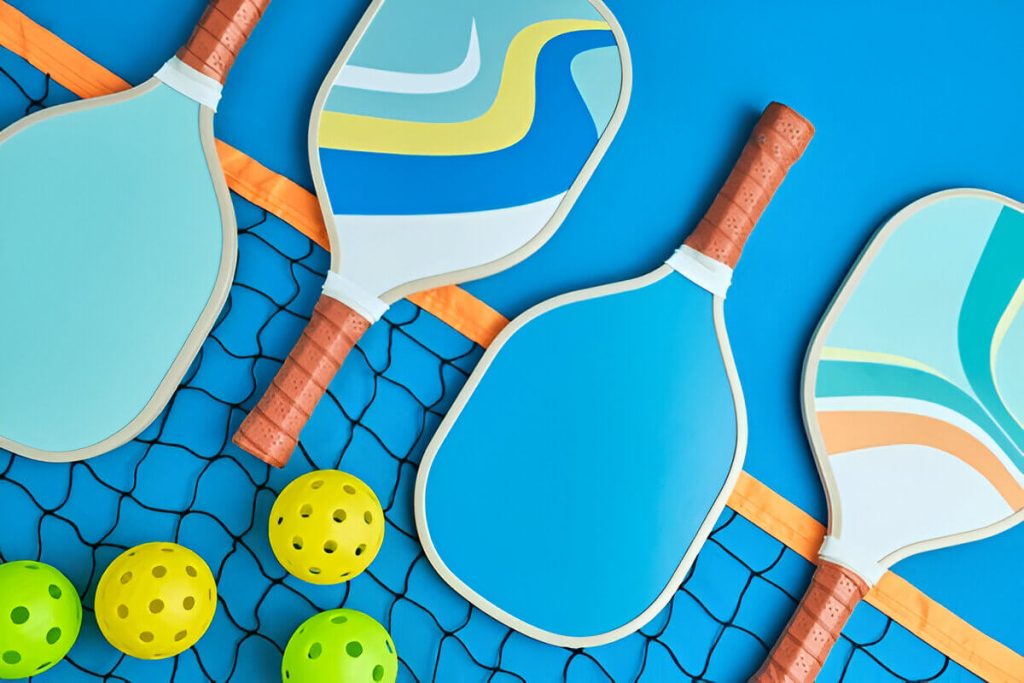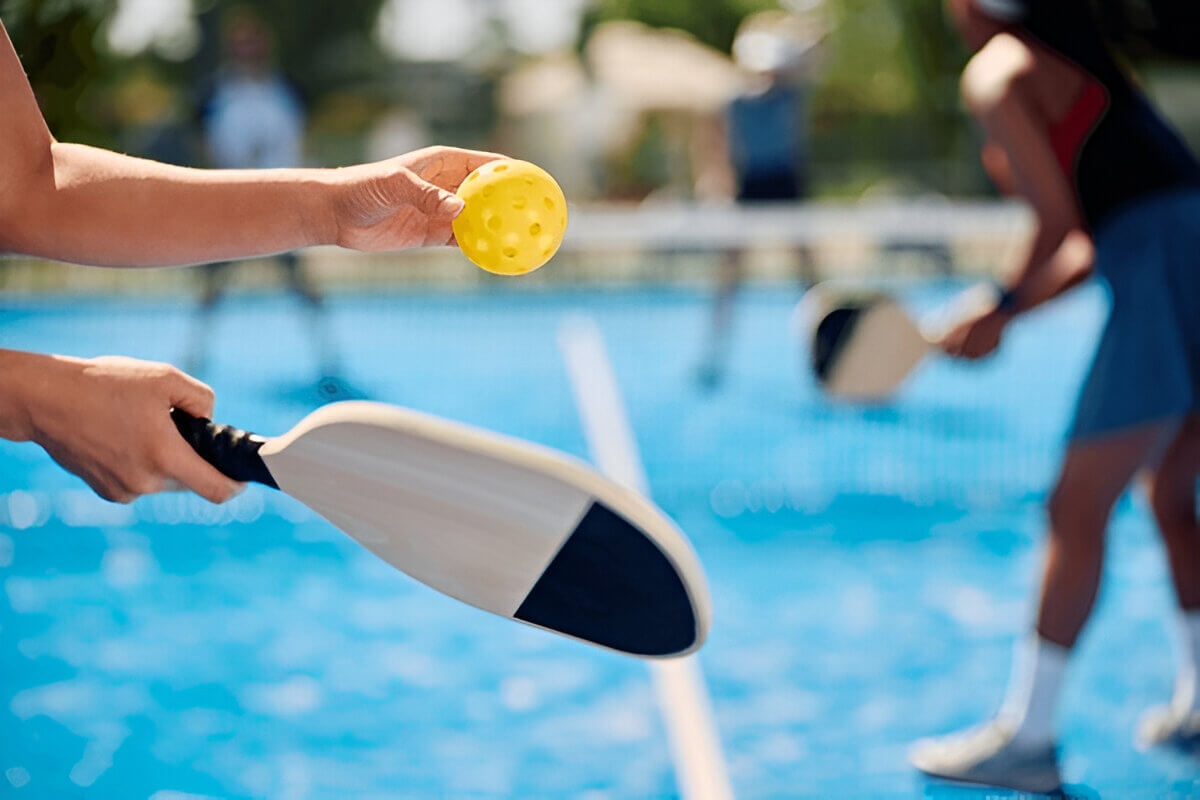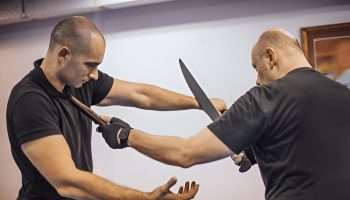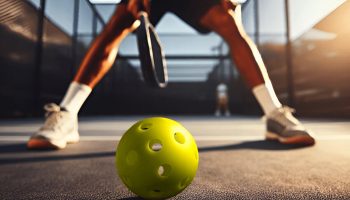Pickleball, combining tennis, badminton, and ping-pong, is a popular sport for all ages due to its simple rules and minimal equipment. This guide covers basic rules, essential gear, and court setup. Whether you’re staying active or seeking a social activity with friends, pickleball offers health benefits and enjoyment. Discover how to master pickleball today!
Understanding the Basics of Pickleball
Pickleball is a rapidly growing sport that combines elements of tennis, badminton, and ping-pong. Played on a court similar to a badminton court with a slightly modified tennis net, it uses solid paddles and a perforated plastic ball. But what exactly is pickleball, and where did it originate?
The history of pickleball dates back to 1965 when it was invented by three dads (Joel Pritchard, Bill Bell, and Barney McCallum) in Bainbridge Island, Washington. They created the game as an activity for their families to enjoy together during the summer. The name “pickleball” has an interesting origin story; it’s said to be named after Pritchard’s dog, Pickles, who would chase after the ball.
For those new to the sport, understanding basic pickleball rules is essential for getting started. The game can be played in singles or doubles format. It begins with an underhand serve diagonally across the net into the opponent’s service court. Points are scored only by the serving side when they win a rally. A key rule in pickleball is that each team must let the ball bounce once on their side before volleys are allowed; this is known as the double-bounce rule.
A beginner’s guide to pickleball would emphasize learning these fundamental rules while developing skills like proper paddle grip and footwork. As players become more comfortable with these basics, they can start focusing on strategy and improving their gameplay.
Whether you’re looking for a fun way to stay active or seeking competitive play opportunities in local leagues or tournaments, pickleball offers something for everyone at every skill level.
The Essential Equipment You Need to Start Playing Pickleball

If you’re gearing up to dive into the exciting world of pickleball, having the right equipment is essential for a great start. The first item on your list should be a good pickleball paddle. As the primary tool you’ll use, choosing a paddle that suits your playing style and comfort level can make all the difference. Beginners often opt for paddles made from lightweight materials like graphite or composite, which provide a nice balance of power and control.
Next, you’ll need pickleball balls. Unlike tennis balls, these are perforated plastic balls that come in different types for indoor and outdoor play. Indoor balls typically have fewer holes and are lighter, while outdoor balls are heavier with more holes to withstand wind conditions.
Court shoes designed specifically for pickleball are another crucial component of your gear. These shoes offer excellent lateral support and grip on the court surface, helping prevent injuries while enhancing your agility during play. Regular running shoes might not provide the necessary stability or traction needed for this sport.
Investing in proper gear as a beginner not only enhances your performance but also boosts confidence on the court. With these essentials in hand (paddle, balls, and court shoes) you’ll be well-equipped to enjoy every match as you hone your skills in this dynamic game.
Setting Up the Court (Dimensions and Layout Explained)
When setting up a pickleball court, understanding the official dimensions and layout is crucial to ensure an authentic playing experience. The standard pickleball court size is 20 feet wide by 44 feet long, which is the same for both singles and doubles play. This compact size makes it feasible to set up a home court in various spaces like driveways or backyards.
The net height for pickleball plays a significant role in the game’s dynamics. Official regulations state that the net should be 36 inches high at the sidelines and dip slightly to 34 inches at the center. This specific height allows for optimal gameplay, balancing challenge with accessibility.
When setting up a home court, it’s important to mark clear boundary lines using durable tape or paint that can withstand outdoor conditions. Ensuring your court aligns with official dimensions not only enhances play but also prepares you for competitive environments. Whether you’re refining your skills or just enjoying casual matches, adhering to these guidelines will elevate your pickleball experience significantly.
The Basic Rules of Pickleball Every Player Should Know
Pickleball has rapidly gained popularity among sports enthusiasts, and understanding its basic rules is essential for anyone looking to enjoy the game. One of the fundamental aspects of pickleball is its unique scoring system. A game is typically played to 11 points, but a player must win by at least two points. Only the serving team can score points, which adds an interesting strategic layer to each match.
Fault rules in pickleball are also critical to grasp. Common faults include failing to serve the ball into the correct service area, volleying the ball before it has bounced once on each side (a violation known as breaking the double-bounce rule), and stepping into or over the non-volley zone – often called “the kitchen” – when volleying a ball.
Serving techniques and rules are another crucial component of pickleball. The serve must be made underhand with contact below the waist, and it should be directed diagonally across the court into the opponent’s service area. Players must keep both feet behind the baseline during a serve until after contact with the ball is made.
By familiarizing yourself with these basic rules, you’ll be well-equipped to enjoy this exciting sport while playing fairly and competitively.
Pickleball Techniques (Tips and Tricks for Beginners)
Pickleball is an exciting and accessible sport that has been gaining popularity among players of all ages. For beginners looking to enhance their game, focusing on fundamental techniques can make a significant difference. Understanding the basic shots in pickleball is essential for building a strong foundation. Start with mastering the forehand and backhand strokes, which are crucial for effective volleys and rallies. Practicing these shots will help you develop accuracy and control.
Effective serves and returns are also vital components of a successful pickleball game. As a beginner, aim to keep your serve simple yet precise. A well-placed serve can put your opponent on the defensive right from the start. When returning serves, focus on positioning yourself correctly to anticipate the ball’s trajectory, allowing you to respond with confidence.
Improving your pickleball skills as a beginner requires consistent practice and patience. Spend time on drills that enhance footwork, agility, and shot placement. Engaging in regular practice sessions will not only boost your technical abilities but also increase your understanding of game strategy. Remember, progress in pickleball comes from dedication and enjoying the learning process along the way.
The Health Benefits of Playing Pickleall Regularly
Pickleball, a fast-growing sport that combines elements of tennis, badminton, and ping-pong, offers numerous health benefits for players of all ages. One of the most significant advantages is the aerobic exercise it provides. Engaging in regular pickleball sessions can help improve cardiovascular health by increasing heart rate and promoting better blood circulation. This aerobic activity aids in burning calories, enhancing lung capacity, and boosting overall endurance.
In addition to the aerobic benefits, playing pickleball regularly can significantly improve balance and coordination. The dynamic nature of the game requires quick lateral movements and sudden changes in direction, which help strengthen core muscles and enhance stability. This improvement in balance is particularly beneficial for older adults as it reduces the risk of falls and related injuries.
Beyond physical health advantages, pickleball also offers social benefits that contribute to mental well-being. Playing sports like pickleball provides opportunities to meet new people, build friendships, and foster a sense of community. The social interaction involved helps reduce stress levels and promotes a positive mood by releasing endorphins during playtime. Overall, incorporating pickleball into your routine can lead to a healthier body and mind while enjoying an engaging social experience.





